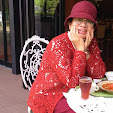It's the peak of summer (July 2017) and that means the peak of Sagaribana blossoms in Okinawa. Before this, I always missed viewing the blossoms closely but last night, hubby drove to the housing areas around Shuri Castle. On one stretch of there were many Sagaribana plants.
It has a soft, sweet smell like a ripened guava. I should say if the smell is bottled into cologne, it is a female smell as a contrast to musk.
I know in Malaysia the Sagaribana new leaves and fruits are taken as a salad. I've tried tasting the leaves, quite bitterish for my liking but I supposed taking it with spicy belacan should go well with rice.
The Japanese called it Sagaribana. Sagaru to lower or to bow, hana is the flower. Don't you think this name is most appropriate when you see how the flower lowered itself lower while blooming into glorious beauty and fragrance?
Malay: Sekarang tengah rancak musim panas di Okinawa. Inilah juga musim pohon Putat berbunga. Sebelum ini saya tidak berpeluang mendekati pohon Putat pada musim ia berbunga tapi malam tadi saya pergi ke kawasan istana Shuri. Terkejut juga apabila terlihat salah satu laluan penuh dengan deretan pohon Putat ini. Bunganya berbau halus dan manis seperti buat jambu batu yang sudah masan ranum. Saya rasa kalau dijadikan air wangi, bau bunga ini ada kejelitaan seperti tabiat kewanitaan, bukan seperti musk yang baunya kuat seperti jantan.
Saya dimaklumkan di Malaysia, pucuk daun dan buah pohon ini dimakan bagai ulam dengan sambal belacan.
Ini gambar2 yang saya ambil waktu malam sebab bunga Putat kembang selepas maghrib. Gambar menggunakan 3 lampu touchlight.

































